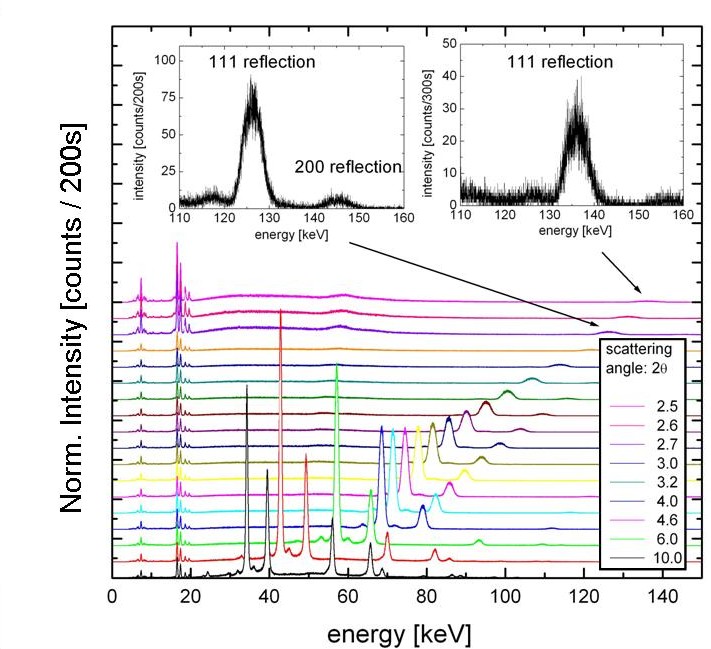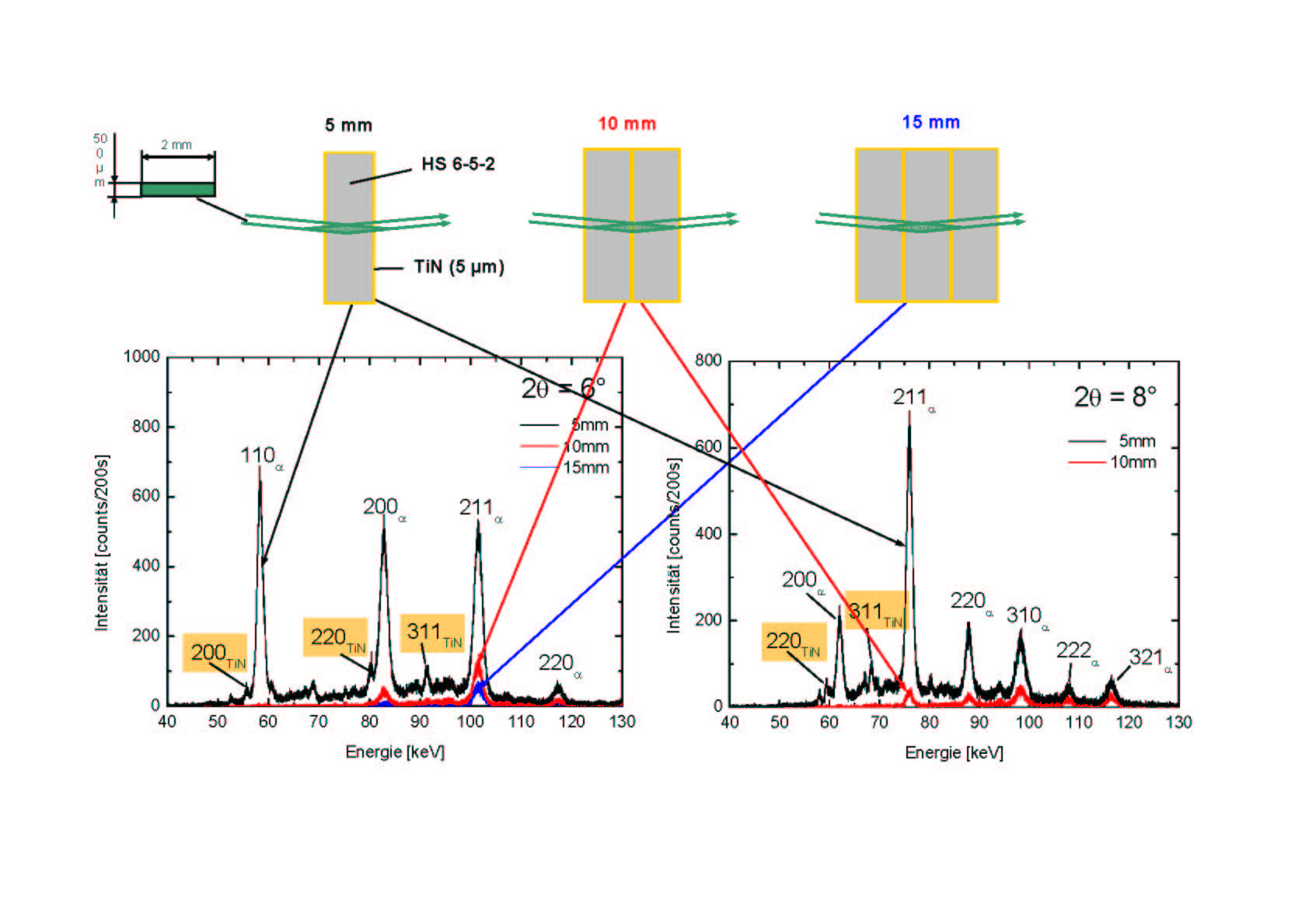Department Microstructure and Residual Stress Analysis
First Experiments
To get an impression of the beam characteristics we varied the scattering angle in the reflection mode from 10° to 2.5° and monitored the diffractograms. Due to the E=1/sin(2θ) relation, all peaks are shifted to higher energies. Regarding the well formed 111 reflection of a Ni-base alloy IN718, interpretation up to 150 keV is possible. At that time, the wiggler magnetic field was 6 T.
Changing to the transmission mode, we made some penetration studies by bringing different amounts of the same TiN coated steel sample into the beam. Though these experiments have also been taken place at 6 T, the penetration is remarkable. At diffraction angles of 6° reasonable diffractograms can be taken from a 15 mm piece within a view minutes.
For characterization of the beam cross section we translated a 100 µm Fe wire through the beam and monitored the diffraction peaks at low angles. Due to the beam limitation by the mask, the intensity stays fairly stable within about 4 mm and decreases rapidly to both sides.




